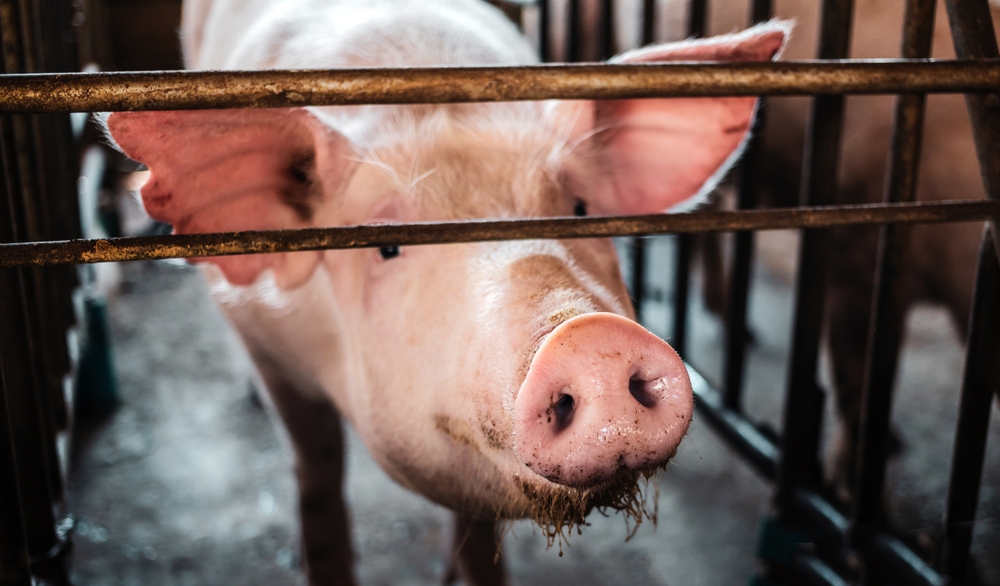
A University of Winchester animal welfare expert, who hit the headlines after her work helped prompt an investigation into alleged cruelty to sheep and goats at a Midlands abattoir, has published a new study on possible problems surrounding the slaughter of pigs.
Associate lecturer Jenny L. Mace appeared in the national media after producing a report based on footage of alleged abuses of sheep and goats at a slaughterhouse in Old Arley, Warwickshire.
Now she has co-authored an article with Winchester colleague Professor Andrew Knight, published by Frontiers in Veterinary Science, on concerns over the suffering which could be caused to pigs which are ‘stunned’ and killed with carbon dioxide (CO2).
Almost a million pigs a month are slaughtered in UK abattoirs and the vast majority (88 per cent) are stunned and killed using high concentration CO2. The pigs are usually slaughtered in groups in a pit where the CO2, which is heavier than air, can remain.
The article by the Winchester pair reviews concerns that the CO2 causes the pigs pain and distress - breathlessness, hyperventilation, irritation to the eyes and nostrils - and the animals display their discomfort by squealing, kicking out and trying to escape.
It should take 30 seconds for the pigs to pass out when exposed to the gas (compared to the almost instant stun dealt by alternative such as a bolt gun) but studies have shown that pigs showing an adverse reaction to the CO2 may take longer to lose consciousness.
Argon, another heavier than air gas, would be the most humane, economic and practical alternative to CO2, Jenny and Professor Knight suggest.
According to the European Food Safety Authority pigs lose consciousness quicker when exposed to argon (13–18 seconds) than in CO2 (17–25 seconds). However, there is a longer time until death with argon (roughly 7 min) than with CO2 (roughly 5 min). The two extra minutes would impact abattoir throughput rates.
The pig article follows hard on the heels of Jenny’s report on the slaughter process at halal meat supplier T&S Abattoir, where film shot with secret cameras by Australian animal rights activist Joey Carbstrong claims to show breaches of government regulations.
In her review of the video, Jenny suggested a mechanical restrainer appeared ineffective, so many sheep escaped after their throats had been cut, and that abattoir workers moved and started to cut up sheep that were still conscious.
Welfare of Animals at the Time of Killing Regulations require halal abattoirs to wait at least 20 seconds before moving slaughtered sheep and goats to ensure they have lost consciousness.
Systematic checks of a lack of consciousness should also be carried out (such as checking for blinking reflexes) to ensure the animals have lost consciousness.
Jenny remarks: “It is abundantly clear from the footage that no systematic checks of consciousness were being carried out; what’s more, the 20-second minimum time period was regularly flouted. These two instances of illegality would lead to immense—and avoidable—pain and distress for the sheep."
Her report identifies 31 “problematic welfare indicators”, pointing to “immense pain, fear, and distress for the sheep”.
Three staff have been sacked by the abattoir and the premises is now the subject of a Food Standards Agency investigation.
The report and article referenced can be read by the following these links:
Welfare report: Non-stun sheep/goatslaughter footage
Back to media centre